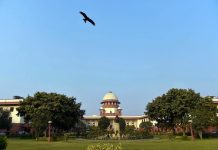This article has been written by Sarthak Mittal, a student at the Vivekananda Institute of Professional Studies of Indraprastha University, Delhi. It explains how courts can charge interest in civil cases under Section 34 of the Code of Civil Procedure, 1908.
it has been published by Rachit Garg
Table of Contents
Introduction
Interest is like compensation given to the decree-holder for being deprived of money that is due. The interest can be claimed from the moment such money was due to the decree-holder until the moment it is paid to him. However, it is pertinent to understand various connotations relating to the right to claim interest, including how the rate of interest will be adjudged, whether it is a non-derogatory right of the decree-holder, and whether interest for any period will be excluded or not. Section 34 of the Code of Civil Procedure, 1908, is the provision that generally embodies all the rules relating to the award of interest by the court concerning decrees that are passed for the payment of money.
What is Interest
In the case of State Bank of India v. Vijay Lakshmi Thakral (2011), the Delhi High Court expounded the definition of the word “interest” wherein it referred to the judgement by Lord Wright in the case of Riches v. Westminster Bank Ltd. (1947), wherein he defined “interest” as the payment that is to be given by the creditor when he does not have the money on the due date. It can be regarded as the profit that the debtor might have had if he had gotten the money on the due date; conversely, he suffers the loss due to creditors and is compensated by charging interest. If it is observed carefully, then the court here recognizes the concept of the “Time Value of Money”, which provides that the money in our hands today is worth less than the same amount of money in the future. This happens due to inflation which reduces the buying capacity of money over some time and due to the power of money to be invested to earn profits. In all cases, if anyone is unreasonably kept devoid of the money he is entitled to should be compensated with interest, as with each passing day the purchasing power of money decreases and he loses the opportunity to invest and earn profits from such money.
In Black Law Dictionary (4th Edition), the word “interest” with respect to money has been defined in consonance with the case of Peabody v. Beach (1856) as compensation allowed by law or fixed by parties for use or forbearance or detention of money, whereas, the interest fixed by the agreement of the parties has been classified as conventional interest and the interest provided by law in the absence of an explicit term stipulating the interest as legal interest, which can be further classified as “simple interest,” wherein a specific percentage of the principal sum is provided as interest, and “compound interest,” wherein the interest is calculated for a specific period and then added to the principal sum, and later that sum becomes the new principal.
The term “interest” in the Usurious Loans Act, 1918, under Section 2(1), is defined to mean and include the return made over and above what was actually lent, this excess can be charged specifically or can be sought to be recovered by way of interest or otherwise in any other manner.
Section 34 CPC : an overview
When a court passes a decree, the court may grant interest on the amount to which the decree-holder is found to be entitled, and Section 34 provides for relevant provisions relating to the granting of such interest. The Section clarifies the sum on which the interest is granted, which is termed the “principal sum adjudged.” It includes the principal sum of money to which the decree-holder is entitled, along with the interest charged on such a sum for the period preceding the institution of the suit. As a result, in general, it is the entire amount claimed by the litigant in court to which he becomes entitled prior to the filing of the suit.
Further, Subsection (1) of Section 34 can be divided into two parts as it provides for interest being granted on two kinds of periods which are as follows:-
- From the date of suit to the date of the decree: The interest on the principal sum adjudged is from the date of suit to the date of the decree. The interest rate should be at the discretion of the court and there is no upper limit to such kind of interest.
- From the date of the decree to the date of payment of money to the decree-holder: Herein, the court can grant interest on the principal sum adjudged at its discretion. However, an upper limit on such interest rate has been cast by the Section which is six percent per annum; such kind of interest has been referred to as “further interest”. Proviso to this subsection provides that in case of commercial transactions the further interest can exceed the rate of six percent per annum and the upper limit in such cases will be the contractual rate of interest. The proviso further explains, that where there is no contractual rate of interest provided the upper limit will be the rate at which money is lent or advanced by the nationalised banks in relation to the commercial transaction.
The first explanation to the proviso provides that the meaning of the term “nationalised banks” is to be construed as per the Banking Companies (Acquisition and Transfer of Undertakings) Act, 1970, wherein the Act has classified a bank as a “corresponding new bank.” The term “corresponding new bank” has been defined under Section 2(d) of the Act, wherein this is the list of body corporates listed as banks, and the list of such body corporates has been provided under Column No. 2 of the first schedule of the Act.
The second explanation to the proviso provides that the term “commercial transaction” will refer to those transactions that are connected with the industry, trade, or business of the party who has incurred the liability. It is pertinent to note that the party who has incurred the liability will be the judgement debtor.
Subsection (2) of Section 34 provides that where the court has passed the decree but the decree is silent on granting further interest, it should be deemed that the court has refused such interest. The following provision also bars a subsequent suit for claiming such an interest.
Scope of Section 34 CPC
In the case of Bhagwant Genuji v. Gangabisan Ramgopal (1940), it was held that Section 34 applies only in cases where the decree is for payment of money, and the fact that the suit included claims of unliquidated damages or liquidated damages is inconsequential to the application of this Section. Further, in the case of Dwarkanath v. Debendra (1906), it was held that no analogy can be drawn between mesne profits and Section 34 as the former aims to remedy the situation of loss caused by wrongful possession and the latter aims to remedy the unjust enrichment of the judgement debtor by prolonging the suit.of
It is pertinent to note that Section 34 does not apply in cases where the decree is for enforcement of a mortgage or charge as the same is governed by Order 34 Rule 11 of the Code. However, a decree passed under Order 34 Rule 6 that relates to an amount payable when the proceeds from the sale of mortgage property are found to be insufficient to cover the debt given in lieu of a mortgage is governed by Section 34 as it is a personal decree.
Amendment to Section 34 CPC
Amendment Act, 1956
Section 34 was amended by the Amendment Act of 1956, wherein certain words were substituted to clarify the concept of “further interest” and the bar of 6 percent per annum on such interest was added. The following amendment also substituted the words “aggregate sum” in Sub-section (2) with the words “principal sum.”
Amendment Act, 1976
Section 34 was later amended by the Amendment Act of 1976, which provided the proviso and two explanations that provided clarity in cases where further interest was to be granted in commercial transactions. Section 97(e) of the Amendment Act provides that the amendment in Section 34 with respect to commercial transactions will be of a prospective nature.
What is an award of interest
There can be three types of interests that can be observed under Section 34 which are as follows:-
- The interest levied prior to the institution of the suit, that is generally stipulated by an agreement between the parties.
- The additional interest levied by the court for the time taken by the court for adjudication of the suit, which is the period from the date of institution of the suit to the date of the decree.
- Further interest is also awarded by the court for the period from the date of the court’s decree to the date of actual payment.
It is necessary to understand all three types of interests and the discretion of the court for granting these interests, which are as follows:
The interest levied before the institution of a suit
Such an interest can either be stipulated or unstipulated. It is to be kept in mind that when this kind of interest is stipulated, then the court, as per the judgement in the case of State of India v. B. Gupta (Tea) Ltd. (1985), has less discretion to reduce or increase such interest. Further, as a general rule, where no such interest rate is stipulated, the plaintiff has no right to levy interest except in cases where the interest is levied as per any mercantile usage or where there is any statutory right to interest. These given exceptions were expounded in the judgements in the cases of BN Railway Co. Ltd. v. Ruttanji (1937) and Union of India v. Watkins Mayor and Co. (1966), respectively. Interest Act, 1978, can be applied to claim interest for all those periods to which Section 34 does not apply; the same proposition of law has been upheld in the case of CT Xavier v. PV Joseph (1995).
The interest levied for the time taken for adjudication of the suit
The rate of interest for this time period is a matter of discretion for the court, and this discretion cannot even be curbed by a rate of interest stipulated in the contract; the same was held in the case of Mangiram v. Dhowat Roy (1886). Further, in the case of Union of India v. Muffakam Jah (1995), it was held that the court should strike a balance between the competing equities and can also take judicial notice of facts like inflation while charging interest pendente lite. This being the rule, it is pertinent to note that if the contractual rate of interest provided is equitable, then the court should have due regard for the rate of interest so provided. It is justified to provide interest for this period of time due to a principal also embodied in the legal maxim “Actus Curiae Neminem Gravabit,” which means that an act of court should not prejudice any man; thereby, it is important to understand that this is the time period that is taken by the court to decide the case and there is no fault of the decree-holder. Then, the interest is awarded to the decree-holder by the court.
In the case of Satish Solvent Extractions Pvt. Ltd. v. New India Assurance Co. Ltd. (1996), it was held that, as a general rule, interest is given to the decree-holder for this period of time; however, if there are cogent reasons to deprive the plaintiff of such interest pendente lite, then the court may not grant any interest for the given period. Further, in the case of Kalyanpur Cold Storage v. Sohanlal Bajpai (1990), it was held that the court was justified in awarding minimal interest, which was 3 percent per annum for this period, since for the period preceding the institution of the suit, a higher rate of interest was being charged. This becomes an ideal example to show how the court can use its discretion to fix the rate of interest for interest pendente lite.
The interest levied from the date of the decree to the date of realisation
This interest is levied to make the decree efficacious, as it acts as a deterrent for the judgement debtor to prevent him from delaying the execution of the decree. In the case of Gordhandas Madhavji and Ors. v. Valmji Khetsi (1966), it was held that where the court, in accordance with Order 20, Rule 11, has postponed the payment of money or has made the money payable in instalments, then in such a case Section 34 will not be applicable and a higher rate of interest can be charged by the court. There is an embargo that the statute provides on the granting of such interest, which is that it cannot be above six percent per annum as a general rule. As an exception, in cases where there is a contract that stipulates the rate of interest for this time period to be more than six percent, the rate of interest stipulated in the contract will be the maximum interest that the court can levy. It is pertinent to note that if the decree passed by the court is silent on such a rate of interest, then it shall be deemed that the court has refused interest for this time period.
Proviso to Subsection 1 of Section 34 CPC
The provision states that if interest is charged for the time period between the making of the decree and payment under the decree, the rate of interest may exceed 6% per annum if the payment is for a liability arising from a commercial transaction; however, the rate of interest should never exceed the rate of interest stipulated by the contract’s parties. In the case of State Bank of Travancore v. K. Vinayachandran (1989), the Court held that all the statutory notifications by legislature aimed at invoking the proviso under Section 34 should be taken judicial notice under Section 57 of the Indian Evidence Act, 1872. Where the court fails to take judicial notice of any such fact, it becomes a patent defect, and a review is maintainable on this ground. In the same case, it was held that, as a general rule, such grants are granted only at a contractual rate, except where there are sufficient reasons for the court to make an exception. However, it is pertinent to note that such exceptions are to be made in rare cases only, and the court should exercise its wide powers granted under Section 34 with great circumspection. The same legal proposition was reiterated in the case of Syndicate Bank v. WB Cements Ltd. (1989), where the Court also substantiated its findings by reasoning that, except in exceptional circumstances, a borrower cannot be given the benefit of a reduced rate of interest on the pretext that the bank has the option to take legal recourse if the borrower fails to pay again after the making of a decree.
The proviso has an interesting connotation in that where there is no contractual rate of interest stipulated between the parties and the transaction is still commercial, the court can move beyond the upper limit of 6 percent per annum by invoking the proviso under Section 34; however, in such a case, the upper limit will be according to Section 2(b) of the Interest Act, 1978, which defines “current rate of interest” as the different rate of interest. The burden of proof in such cases will lie on the claimant to prove the current rate of interest being charged by nationalised banks.
Judicial pronouncements related to Section 34 CPC
Interest pendente lite
A division bench of the Supreme Court clarified in the recent case of Small Industries Development Bank of India v. M/s Sibco Investments Pvt. Ltd. (2022) that interest pendente lite is a discretionary matter of court that the court decides based on equitable considerations. The Supreme Court in the following case denied interest pendente lite as the claim was not pressed by the respondent in the trial court and there was also no mention of such a claim in the appeal memo, which in toto manifested the lack of seriousness of the respondent regarding such a claim.
The interest levied by arbitrators
In the case of Alimenta S.A. v. N.A.C.M.F. of India (2018), two prominent issues were raised before the Delhi High Court. The first issue is that where interest is charged for the period between the making of the award and payment of the money, the interest charged will only be on the principal sum and not on the composite sum, which includes the principal sum adjudged and interest pendente lite charged by a court. The second issue is that since the post-award interest charged by the arbitrators is more than 11 percent, Section 34 of the CPC cannot be applicable, as only up to 6 percent of interest can be charged under the section. Concerning the first issue, the Division Bench of the Hon’ble Court held that interest can be charged on the composite sum and that there is no bar to granting such interest under Section 3(3) of the Interest Act, 1978, or any provision of the Arbitration Act, 1940. The Court further clarified that if the post-award interest is not granted by the executing court on the composite sum, then the same will amount to the executing court going behind the decree. Regarding the second issue, it was held that Section 34 of the CPC does provide for an upper limit of 6 percent, but the provision can still operate as it grants powers to the court to grant post-award interest.
The arbitrator’s powers to award interest pendente lite were always seen with a sceptical lens, as it was argued that statutes grant civil courts powers to provide interest for the time taken by the court to adjudicate the case to do complete justice. Still, the post of an arbitrator who is a creature of an agreement should not be allowed to charge such interest where the agreement does not stipulate it explicitly. In the case of Board of Trustees for The Port of Calcutta v. Engineers De Space Age (1996), the Supreme Court’s constitutional bench enunciated the reasoning behind the grant of interest pendente lite by civil courts under Section 34 and clarified why arbitrators should have the power to grant such interest. The court further clarified that where arbitrators are an alternative forum for dispute resolution chosen by the parties and where the powers to grant such interest are not extended to the arbitrators, then the parties will file applications in the civil courts for grant of such interest, which will lead to the grant of such interest. The Court went ahead and clarified that such interest is not a matter of substantive law, like interest charged on the principal sum prior to the reference to the dispute resolution forum; thereby, these powers can be inferred to facilitate the authorities in doing complete justice. The Court also held that the arbitrator should duly consider all the principles of Section 34 before granting such an interest.
Suit by banks
In cases where the suit has been filed by the bank, the court has some additional considerations that are to be kept in mind related to the workings of the bank. The same proposition of law was manifested by the Kerala High Court in the case of Catholic Syrian Bank Ltd. v. NV Varkey (1987), where the Court, while awarding interest at the rate of 12 percent per annum in a money suit, noted that banking businesses are of such a peculiar model that they can run only when the recoveries of advances are effected. Further, in the case of Vijaya Bank v. Art. Trend Export (1992), the Calcutta High Court held that where, in a contract between banks and an entity, a rate of interest has been stipulated for the period prior to the institution of the suit then the courts have no discretion to ignore the same as per Section 21A of the Banking Regulation Act, 1949. Furthermore, in the case of Indian Bank v. Textile Inland Agencies (1992) Calcutta High Court held that wherein a person has executed a promissory note in favour of the bank and the bank sues on basis of such promissory note, the rate of interest then as per RBI Circulars and the purpose of the section the interest rate stipulated in the pronote should be the interest rate charged as interest pendente lite unless there are vehemently compelling reasons to disregard the same.
Conclusion
Interest is granted by the court to remedy the loss caused to the decree-holder by being deprived of money he is legally entitled to by the judgement debtor. It is a medium of compensation used to maintain the status quo by restoring the parties to their original positions. Section 34 of the Code has to be construed in accordance with the provisions of equity and reasonableness, as it solely aims to provide the decree-holder with the actual benefit which he could have had from the money which the judgement debtor is being compelled to pay. The Section does not focus on the recovery of money but on the interest that is to be levied on the sum recovered during pre-lite, pendente lite, and post-lite. The provision is of an exhaustive nature relating to the levying of interest in cases of personal decrees for payment of money.
Frequently Asked Questions (FAQs)
Can the court levy compound interest under Section 34 CPC?
As held in the case of Kaluram v. Chimniram (1934), the court can levy compound interest from the date of institution of the suit wherein the compound interest was being charged during the ordinary course of dealings between the parties. However, in such cases, the burden of proof will lie on the decree holder to prove that the charging of compound interest is justifiable.
Does Section 34 CPC apply in the cases of negotiable instruments?
It is pertinent to note that cases related to negotiable instruments are dealt with in accordance with the Negotiable Instrument Act, 1881, where Section 79 of the Act provides for the levying of interest in matters related to negotiable instruments. In the case of United Bank of India v. P Krishnaiah (1989), it was held that Section 34 of the Code of Civil Procedure, 1908, would prevail even over the Negotiable Instrument Act, 1881. The rationale is that the Code came into force after the Act, and the Code was cognizant of the existence of provisions like Section 79, but the legislature consciously omitted to insert any exceptions in Section 34, which shows legislative intent to make Section 34 prevail over Section 79.
References
- The Code of Civil Procedure (Vols.1, 19th edition), 2017 by Sir Dinshaw Fardunji Mulla
- The Code of Civil Procedure (Vols.1), 2019 by M P Jain
- https://www.lawinsider.in/columns/interest-code-of-civil-procedure-1908
- https://articlesonlaw.in/i-n-t-e-r-e-s-tsection-34-of-cpcinterest-in-civil-suit/
- https://www.tclindia.in/section-34-of-cpc-empowers-the-court-to-grant-post-award-interest-even-where-the-statute-does-not-provide-for-payment-of-interest-on-awarded-sum/
Students of Lawsikho courses regularly produce writing assignments and work on practical exercises as a part of their coursework and develop themselves in real-life practical skills.
LawSikho has created a telegram group for exchanging legal knowledge, referrals, and various opportunities. You can click on this link and join:
Follow us on Instagram and subscribe to our YouTube channel for more amazing legal content.
 Serato DJ Crack 2025Serato DJ PRO Crack
Serato DJ Crack 2025Serato DJ PRO Crack











 Allow notifications
Allow notifications


